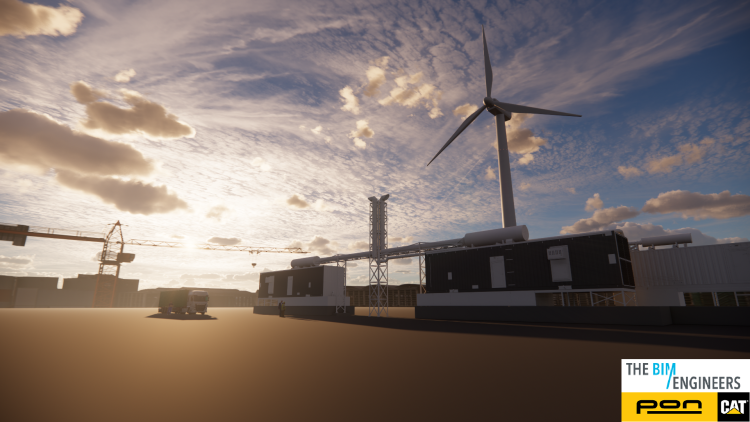



In the modern era of sustainable architecture and engineering, there's a rising emphasis on incorporating renewable energy systems into buildings. The challenge of this integration, however, lies in the complexity of the design and execution process. To navigate this challenge, the industry is increasingly turning to Building Information Modelling (BIM) - a technological innovation that has revolutionized how we design, construct, and manage building infrastructure.
As an industry leader at the forefront of BIM technology, we've spent over a decade pushing boundaries and setting new standards in the world of BIM. This blog post explores the significant role of BIM in integrating renewable energy systems into building designs, focusing on its potential to streamline project management and optimize sustainability.
Over the past decade, BIM has transformed the architecture, engineering, and construction (AEC) industry by revolutionizing how we approach building design and project management. BIM is not merely a tool or a software; it's an intelligent, 3D model-based process that provides professionals with insight and tools to more efficiently plan, design, construct, and manage buildings and infrastructure1.
BIM has proved to be an essential asset in project management due to its capabilities that extend beyond just design and modelling. Its central strengths lie in its ability to:
Enhance communication and collaboration: BIM enables stakeholders to visualize the building in three dimensions, which significantly improves communication and understanding among the project team2.
Facilitate better decision-making: By enabling real-time updates and integrated workflows, BIM supports informed decision-making, preventing costly mistakes and rework3.
Reduce construction costs and timeline: BIM allows for clash detection and resolution of issues before construction begins, thereby saving time, improving safety and reducing costs4.
In essence, BIM provides a foundation for better integration and synchronization of people, processes, and technology involved in construction projects, thereby driving efficiencies in project management5.
As we grapple with the challenge of climate change, the AEC industry plays a vital role in shifting towards sustainability. Renewable energy systems - encompassing solar, wind, geothermal, among others - are integral to this shift. By reducing reliance on fossil fuels, these systems can significantly cut down greenhouse gas emissions and create more energy-efficient, environmentally-friendly buildings6.
The integration of renewable energy systems into building designs, however, can be complex and challenging. This is where BIM's capabilities can be harnessed to ease this process and enable optimal utilization of renewable energy.
BIM's intelligent, 3D model-based process makes it an effective tool for designing and integrating renewable energy systems. By allowing for accurate simulation and visualization of these systems, BIM can optimize energy efficiency and ensure seamless integration within the building design7.
With BIM, project managers can effectively determine the ideal placement and orientation of solar panels on the building's structure. It allows for precise solar incidence calculations and performance predictions8. This ensures optimal solar energy harvesting and cost-effective panel installation.
Similarly, BIM can facilitate the integration of wind energy systems. It can map wind patterns, assess potential energy yield, and suggest the best locations for wind turbines. This ensures that the building's design harnesses the maximum potential of the local wind energy9.
BIM's ability to simulate and visualize these systems before construction begins can significantly improve the efficiency and effectiveness of the renewable energy integration process. By leveraging this technology, project managers can make informed decisions that drive sustainable design and construction10.
In a world where sustainability and energy efficiency are imperative, the importance of BIM in renewable energy integration cannot be understated. Predicted trends suggest that BIM's role will continue to expand and evolve.
Advanced technologies like Artificial Intelligence (AI) and Machine Learning (ML) are set to enhance BIM's capabilities further. These technologies can enable more precise energy simulations and predictions, making BIM an even more powerful tool for renewable energy integration11. By constantly pushing the boundaries of innovation, we are committed to staying at the forefront of these advancements and ensuring that our clients reap the benefits of these developments.
The integration of renewable energy systems into building design is an integral part of creating sustainable and energy-efficient buildings. As a game-changer in building design and project management, BIM plays a vital role in this process. By simulating and visualizing renewable energy systems, BIM allows project managers to make informed decisions that drive sustainability and efficiency.
The future of BIM and renewable energy systems looks promising. As we continue to lead in the world of BIM, we are excited to see how these trends will transform the AEC industry and contribute to a more sustainable future.
How can BIM improve the integration of renewable energy systems into buildings?
BIM can improve integration through accurate simulation and visualization of renewable energy systems within the building design. It enables project managers to make informed decisions regarding system placement and performance.
What role does BIM play in enhancing the efficiency of renewable energy systems?
BIM can help enhance efficiency by predicting the performance of renewable energy systems and suggesting optimal system placement.
How can BIM aid project managers in renewable energy projects?
BIM can aid project managers by streamlining communication, facilitating informed decision-making, and reducing costs and timelines.
What is the future of BIM and renewable energy systems?
The future looks promising with advancements in AI and ML expected to enhance BIM capabilities, leading to more precise energy simulations and predictions.
https://www.cadac.com/en/insights/7-advantages-of-bim-in-construction/
https://www.archdaily.com/900405/how-bim-can-make-building-renovations-and-retrofits-more-efficient
https://www.designingbuildings.co.uk/wiki/The_benefits_of_building_information_modelling
https://www.sciencedirect.com/science/article/pii/S0926580517309806
https://www.sciencedirect.com/science/article/pii/S1364032114002345
https://www.sciencedirect.com/science/article/pii/S0926580515000918
https://www.sciencedirect.com/science/article/pii/S0360132316304329
https://www.sciencedirect.com/science/article/pii/S0926580517309806
Copyright © 2022 The BIM Engineers. All Rights Reserved | Design & Developed by Prettify Creative